
Did you know that grooving metal dates back to the 1890s when people started using toolbits? Yes, this machining operation has existed longer than most people would imagine. It is widely popular in industries for its effectiveness in enhancing mating between parts.
Areas of grooving metal application include automotive, aerospace, and general manufacturing. The technique offers various benefits including enhanced functionality of parts, high adherence to specifications, and improved production.
To get the best from grooving machining, it is worthwhile to carefully consider the workpiece material, the cutting tool, the cutting parameters, and several other things. Providers of the best CNC machining services know how to incorporate these factors regardless of a machining project’s uniqueness.
This article highlights these and other important aspects of grooving metal.
What is grooving metal?
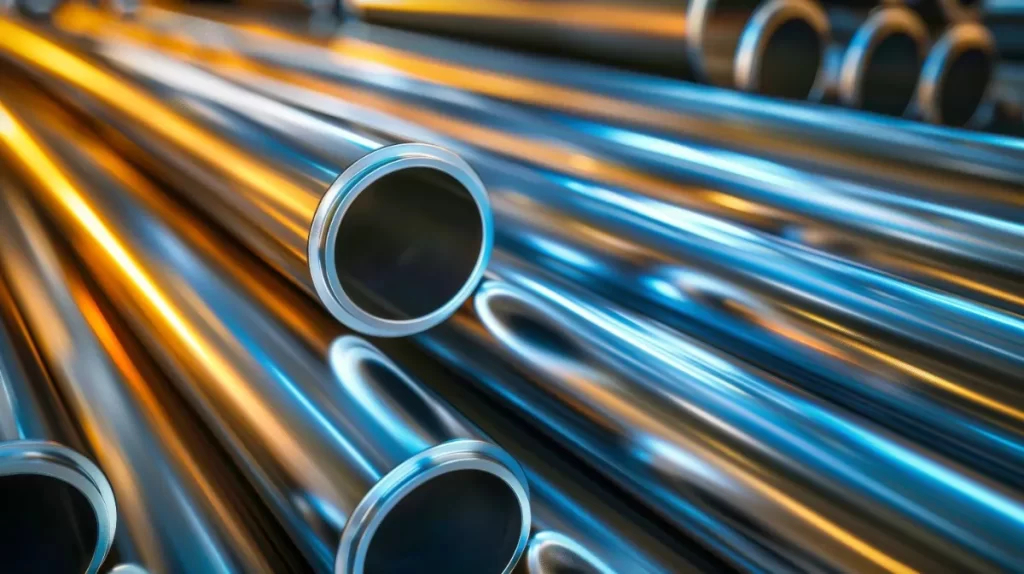
Metal pipes with grooved ends
Grooving metal is a machining process that uses a special tool to cut recesses or channels in metal. Although these recesses are usually narrow, they can vary widely in shape and depth. The parameters for the metal grooves depend on the specific requirements of the part.
The grooves created on the metal are crucial when two parts mate. Lathe machines are the most popular for grooving operations. Operators use their CNC turning skills and special tools to groove metal.
The versatility of metal grooving is evident in the various types of grooving available. You can use internal grooving, external grooving, parting off, and thread grooving, among other methods. Your choice depends on the project and the capability of your CNC machine.
What is the process of grooving?
The following steps define the process of metal grooving:
Step 1: Design the metal groove
The operator uses Computer-Aided Design (CAD) software to specify the cutting parameters including the size and location of the cut.
Step 2: Save the Designs
The machinist saves the model in a compatible format. The STEP file format is renowned for its versatility, but some CNC machines use the IGES file format.
Step 3: Prepare the Grooving Machine
This is the stage of grooving where you choose the best grooving tool and fix it on the CNC machine. You also secure the metal workpiece metal to the machine.
Step 4: The Grooving Operation
The CNC machine grooves the metal. If the parameters are fed right, this stage will proceed smoothly.
Step 5: Quality Control
Quality checks on the grooving results are recommended. They help ascertain the attainace of the expected surface finish and parameters.
How does CNC grooving metal compare to conventional grooving?
Grooving metal using the CNC method is markedly different from conventional grooving machining in several ways. The table below summarizes those differences.
|
Element |
CNC grooving |
Conventional grooving |
|
Process control |
Computer Numerical Control (CNC) |
Manually controlled by the operator |
|
Investment |
Higher initial cost but is more cost-effective for large volumes |
More affordable initially but could be more uneconomical for large volumes |
|
Machine setup |
May be more demanding and lengthy due to the need for programming |
A shorter setup time, but it requires manual adjustments |
|
Lead time |
Automation makes lead times shorter |
Longer lead times – manual operation |
Identify the different types of grooving metal operations.
There are several types of grooving operations, some of which we discuss below:
Internal Grooving
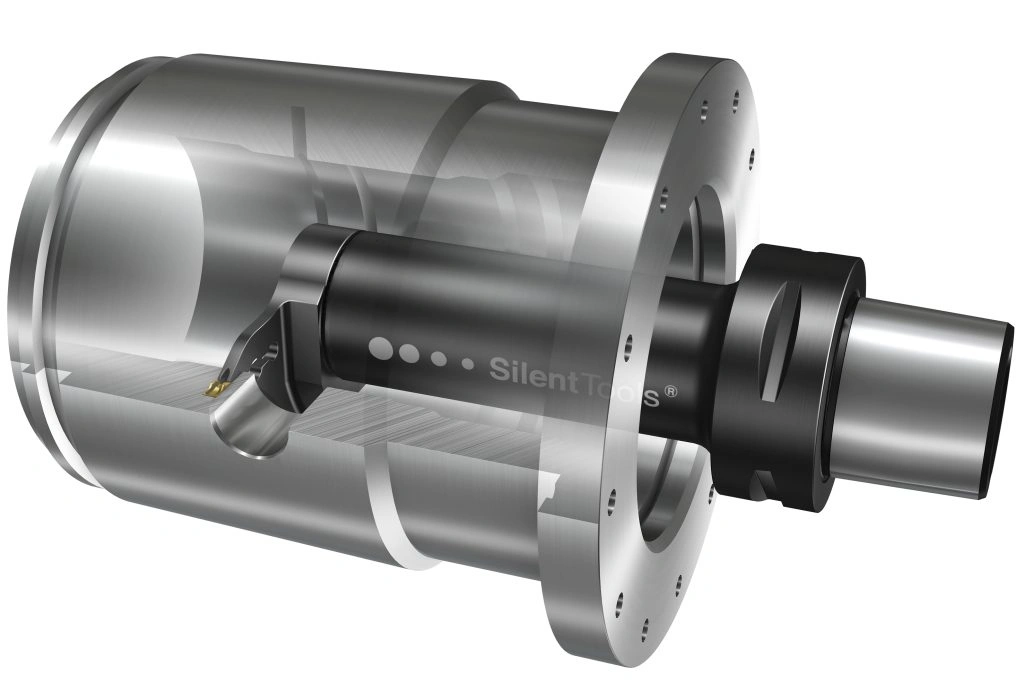
Internal grooving
Internal grooving is a metal machining method of forming grooves within a material. It is different from the conventional drilling, which creates cylindrical holes. Internal grooving can form complex profiles on internal surfaces. This type of grooving applies to cylinders, pipes, and other components that require internal grooves.
External Grooving
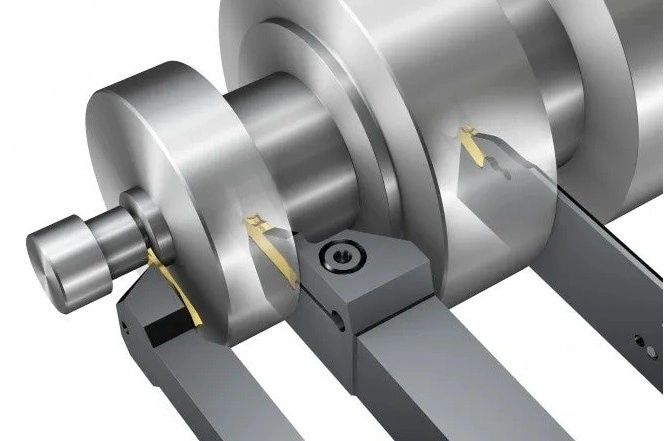
External Grooving
External grooving is the opposite of internal grooving in that the grooves are made on the outer surface of the cylindrical workpiece. These grooves are applicable in tight-fitting between two cylindrical components.
Parting Off
Parting off is a popular grooving process whereby a lathe machine cuts a groove in a material until it separates the material into two. Parting off often separates a finished part of a workpiece from the rest of the stock.
Face Grooving
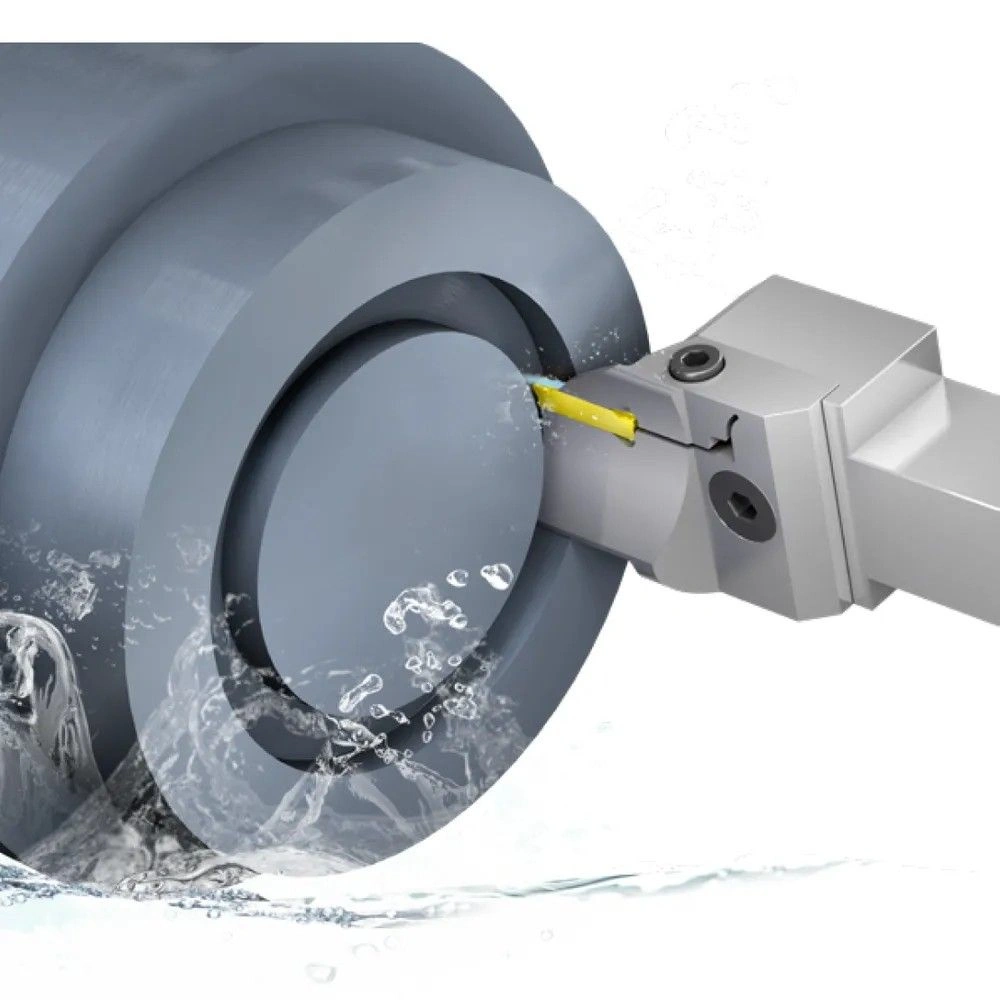
Face Grooving
Face grooving is slightly different from the other types of grooving. Instead of forming the grooves on either the outer or inner surface, it cuts the face of the workpiece. The grooves point outwards from the face.
Undercutting
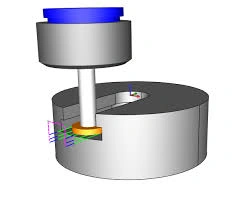
Undercutting Type of Grooving
This is an equally unique type of grooving machining. The formed groove is characterized by a recessed surface on the component. A perfect demonstration of an undercut is a T-slot. The undercut in this instance is the horizontal line. Note that this type of grooving can be either internal or external.
Contour Grooving
Contour grooving is defined by machining along a specific curvature on metal, cylindrical or any other shape. The goal of contour grooving is to generate channels suitable for intricate geometries. This grooving metal type is found on molds, turbine blades, and engine components.
Try Prolean Now!
Industries that use Grooving Metal
Grooving operations are highly dynamic so you will find their applications across industries. Some of the industries that use grooving operations are summarised in the table below:
|
Industry |
Applications of Grooving |
|
Automotive |
Keyways for shafts, piston ring grooves, |
|
Aerospace |
Turbine blade grooves to enhance cooling, sealing grooves |
|
Oil and gas |
high-pressure pipelines, drilling pipes |
|
Medical |
Implantable products, surgical devices |
If you are in such industries, multi-axis machining might be the game changer for you.
Mating shafts with keyways are common.
Common grooving metal challenges and their solutions
Expect several challenges when grooving a workpiece. Fortunately, there are ways of minimizing or overcoming those challenges. Let us discuss some of these challenges:
Tool Wear
Tool Wear and Breakage
Like CNC milling and other metal machining processes, grooving involves tool wear. Tool wear eventually leads to tool failure. With proper tool monitoring, you can take care of this problem. Note that this failure depends on several factors including cutting speed, cutting depth, and coolant. You can identify tool wear through chipping, fracture, and plastic deformation. Apart from recognizing tool wear warning signs, match the cutting tool to the material and type of grooving process.
Chips Formation
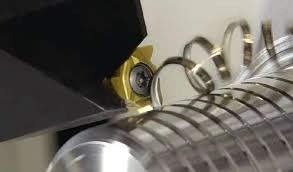
Chip formation is a major challenge in grooving
Another challenge during the grooving machining process is chip formation and the requirement to remove these chips. If you don’t evacuate the chips properly, the grooving tool will recut them. As this continues, the danger of the grooving process stalling increases.
In the worst-case scenario, the insert and cutting tool will get damaged. There are instances when the cutting tool and workpiece have welded together in the friction welding process.
Successful grooving in light of this challenge depends on the chosen grooving tool. The best grooving tools have high-pressure coolant systems. A good insert chip breaker can also remedy this challenge.
Key considerations for successful grooving metal operation
As discussed above, there are several grooving tool designs. Grooving tools produce unique shapes per the designs. Alongside having a good grooving tool, you need to consider several other elements to achieve the desired results. Some of the recommendations from Prolean Tech are highlighted below.
Type of Workpiece Material
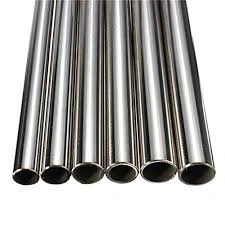
Stainless Steel Pipes
You can groove different metals including stainless steel, copper, and iron. It is important to choose the appropriate material, starting with its compatibility with the cutting tool. When the material and the tool are incompatible, precision challenges may occur.
Grooving Tool
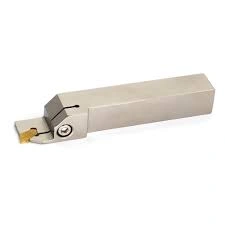
Grooving tool and holder
Cutting tools for grooving come with different designs and capabilities. There is a specific tool for every type of groove. A cutting tool for internal grooving may not produce a good face groove. As mentioned above, the cutting tool and the chosen workpiece material must be compatible.
Cutting Parameters
You should always be keen about the cutting parameters for grooving. The quality of the groove can seriously be reduced due to a minor inaccuracy. One of the parameters to keep in mind is the cutting speed. Tools are always in danger of overheating and getting damaged if the cutting speed is too high.
Take care of the feed rate too. A too-fast feed rate can cause damage to the cutting tool. Another cutting element to take control of in grooving machining is vibration. When a tool vibrates as it machines a groove in metal, it can easily cause mistakes. So, you should ensure the speed of the machine is manageable.
Process Monitoring and Quality Control
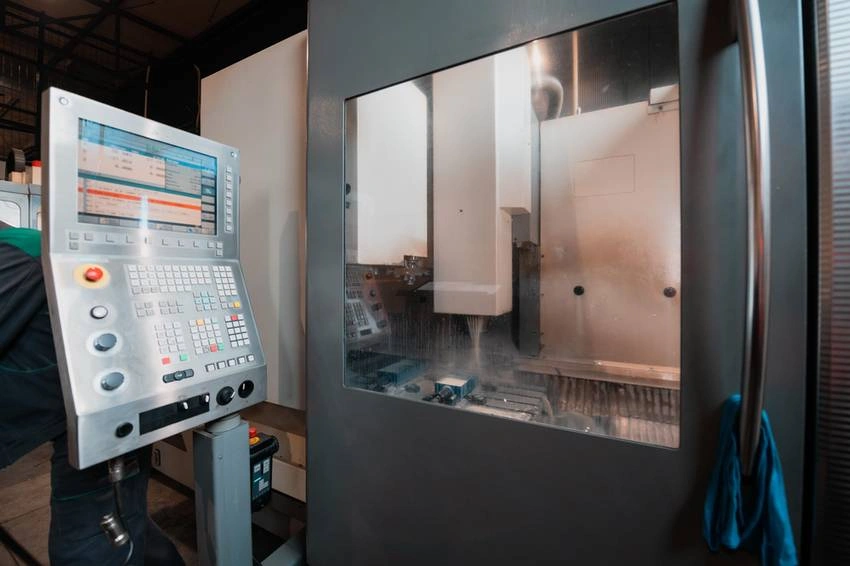
A CNC control panel and ongoing machining process
While the CNC program dictates the grooving metal parameters, being 100% sure about the quality and efficiency of the process means constantly monitoring and controlling the process. By constantly checking the cutting sound, surface finish, and other grooving aspects, the operator can discover potential process problems early and remedy them.
Quick tip:
Know which CNC axis is right for your project
Wondering why CNC machined parts are better than molded ones? Find out!
Try Prolean Now!
In Conclusion
Grooving has a significant role in many industries. It helps create recesses, channels, and threads in different types of metals to enhance the function and aesthetics of components.
Since this machining method, like all the others, has its challenges, it pays to adhere to the best practices of grooving.
For more information about grooving and other interesting metal machining techniques, please get in contact and request to discover custom solutions.
FAQs
What is the primary purpose of grooving metal edges?
The primary purpose of grooving the metal edges is to prepare the edges for welding or joining to another piece. With the groove in place, the weld is stronger with fewer defects. The U-groove and V-groove are specific grooving techniques that work together with welding for metal edges.
What is the difference between grinding and grooving?
While grinding and grooving are machining processes, their forms and applications differ. Grinding is an abrasion-based process that helps achieve specific surface finishes or product parameters. Grooving is a cutting operation that helps create a recess in a material.
What is the difference between grooving and turning?
Grooving creates a narrow recessed cut on metal while turning reduces the diameter of a workpiece to create the desired cylindrical shape. Yes, grooving may be considered a subset of turning, but the tools for grooving are more specialized.
How To Roll a Groove in a Pipe
A grooved mechanism is handy when joining two metal pipes using a coupling. Rolling a groove in a pipe entails creating a narrow cut around the pipe’s circumference. This recess will hold the coupling, allowing for a tight joint between two pipes.
The steps for this roll grooving process are:
Prepare and set up: Select the grooving set and machine according to the pipe parameters and material. Fix the pipe to the grooving machine, ensuring it is aligned and secured.
Adjust: The grooving roll set allows for adjustment of the depth of the groove. Use these settings based on the material’s specifications.
Groove the pipe: Start the roll grooving machine and wait as it rolls all around the pipe. The pipe rotates and the machine creates the groove according to the specification.
Remove the pipe and inspect it: Once the roll grooving process is complete, remove the pipe and inspect the width and depth of the groove.
What is grooving in sheet metal?
Grooving for sheet metal is the use of skills and techniques to develop indentations in sheet metal. You can create these grooves with a CNC machine, manually, or a mechanical machine. Grooving in sheet metal is valuable for enhanced structural integrity, improved aesthetics, and better functionality.
What is the benefit of groove?
A groove in a metal offers several benefits. One of them is improved functionality of a component, for instance, by allowing the use of seals and rollers. Grooving metal can also enhance a component’s structural integrity. A good example is where grooves help in stress distribution. Other benefits of grooving are component weight reduction and improved aesthetics.
Is groove metal death metal?
No, groove metal is not death metal. The term “death metal” refers to a music genre characterized by low-tuned guitars, but groove metal is a machining process that introduces a groove or recess in metal.

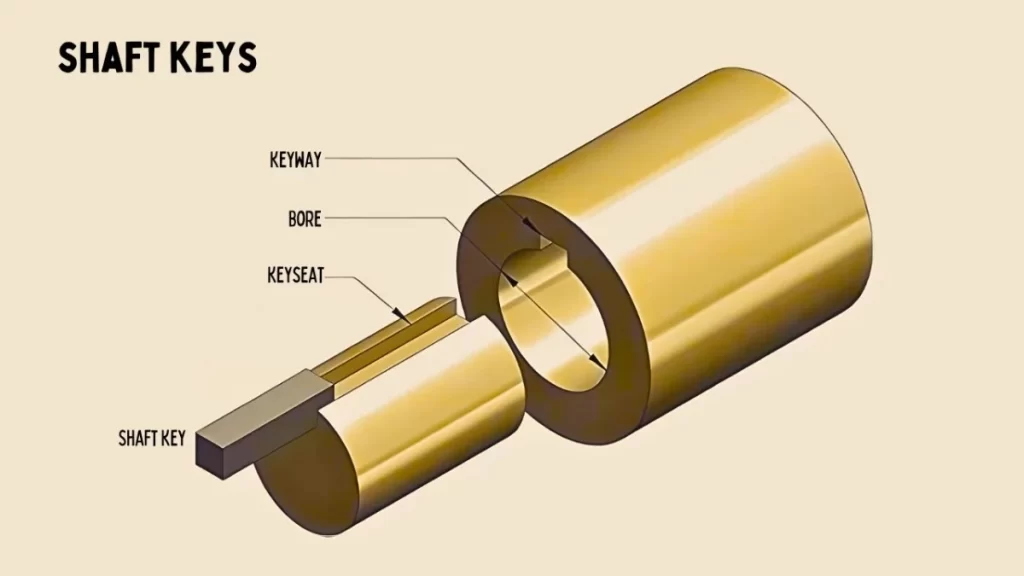
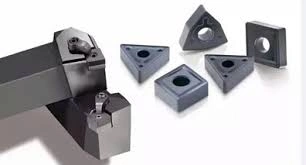
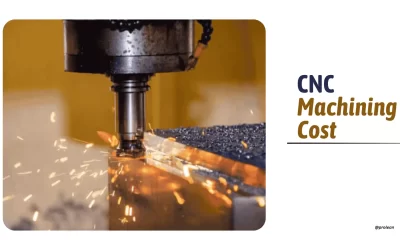
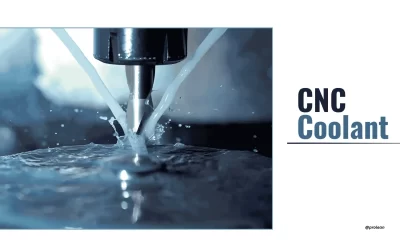
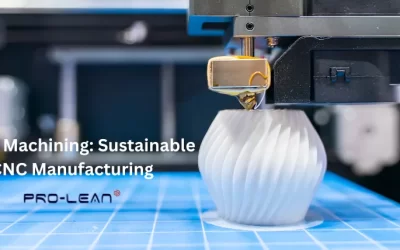
0 Comments